Watercolor village scenery painting captures the charm and simplicity of rural life using soft colors and fluid techniques. It allows artists to create peaceful scenes filled with houses, trees, and natural elements, often highlighting everyday village activities.
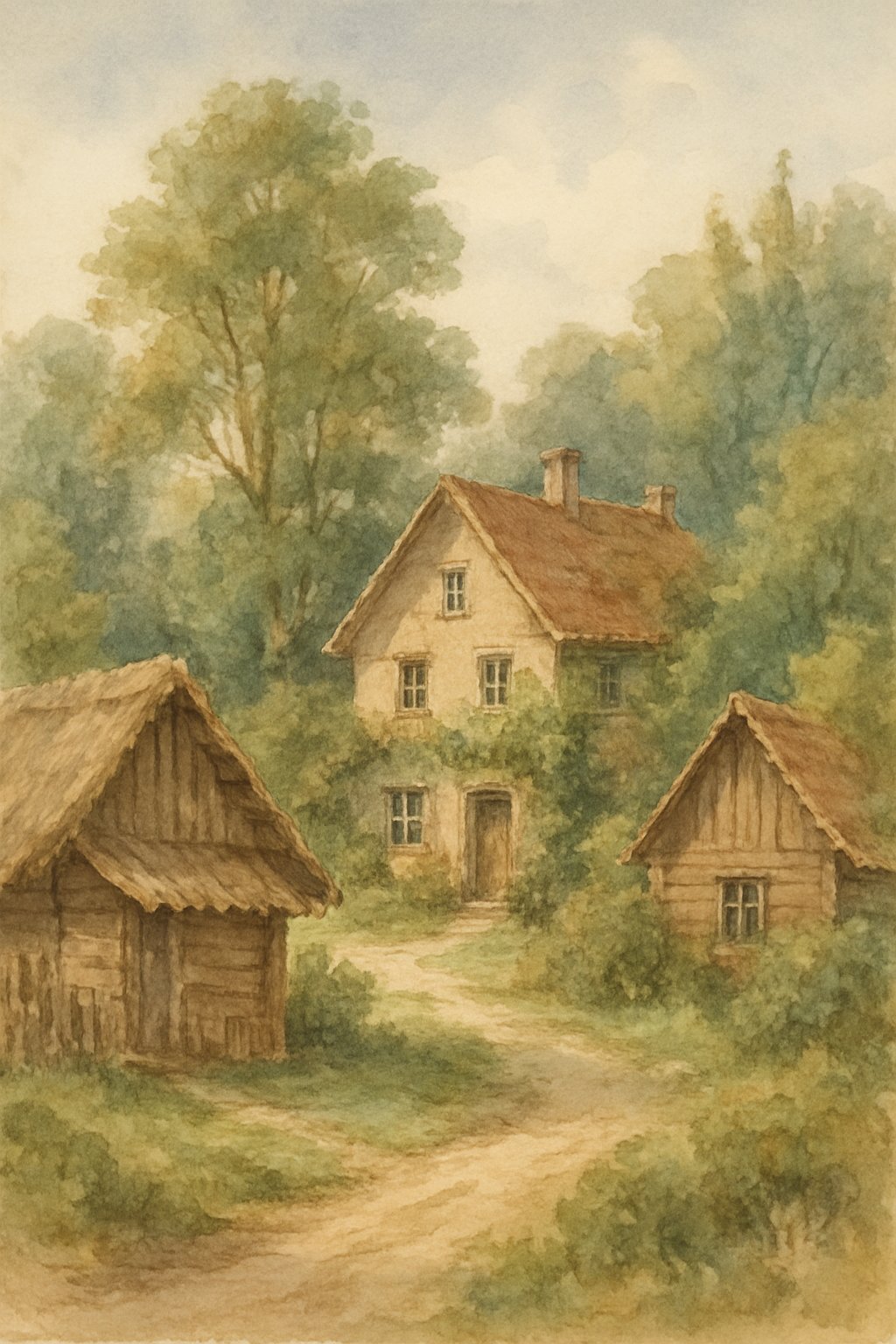
This style of painting is valued for its ability to blend colors gently and produce a calm, inviting atmosphere. Artists of all levels enjoy exploring different ideas to express the beauty of village landscapes through watercolor.
1) Rustic village street with houses and trees
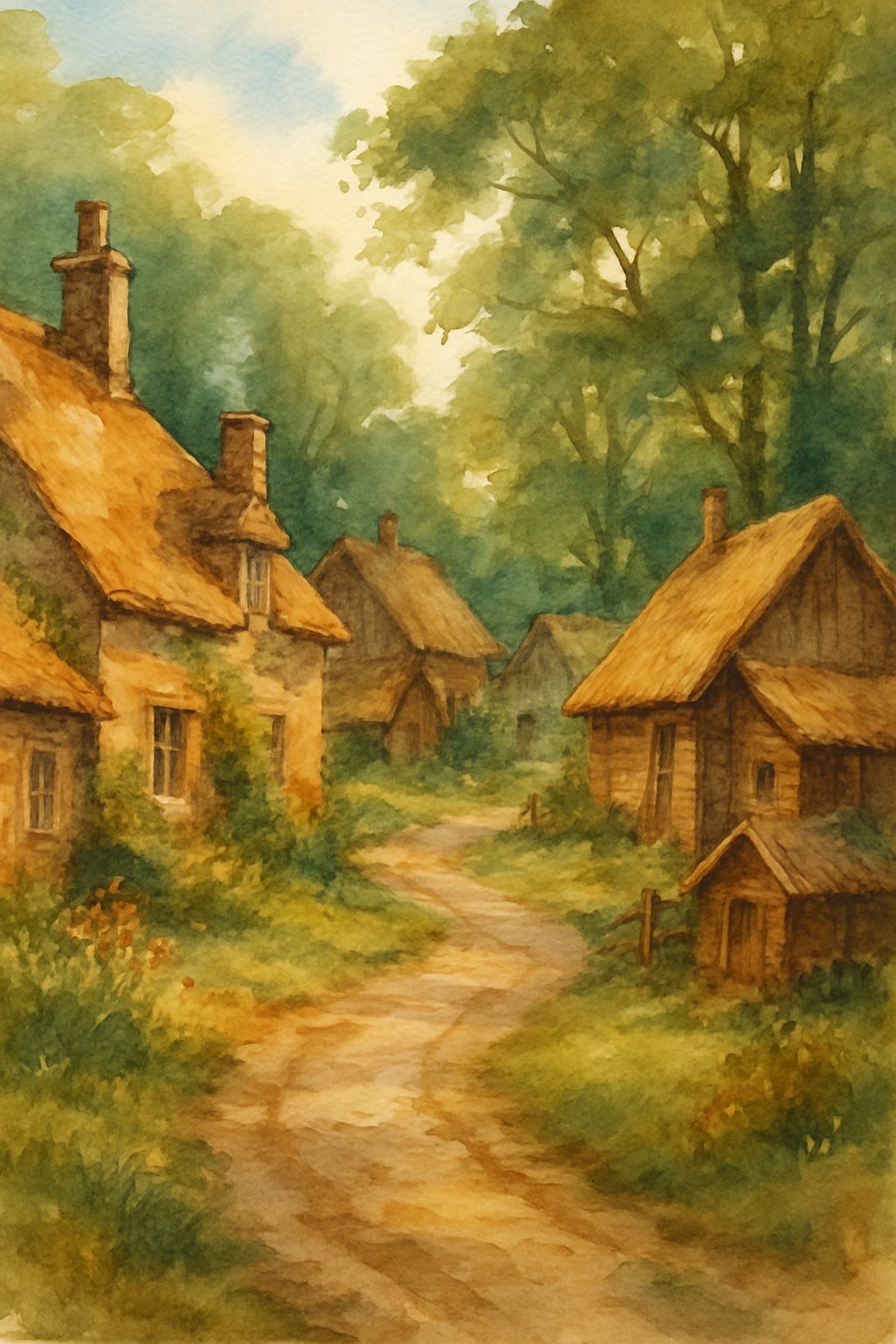
This scene often includes a quiet street lined with small houses on both sides. Trees add depth and texture to the background, framing the scene naturally.
Artists focus on simple shapes and soft colors to capture the calm feel of rural life.
Using light washes and layered colors helps create the look of sunlight filtering through leaves. This style suits both beginners and experienced painters.
2) Village grocery shop under a mango tree
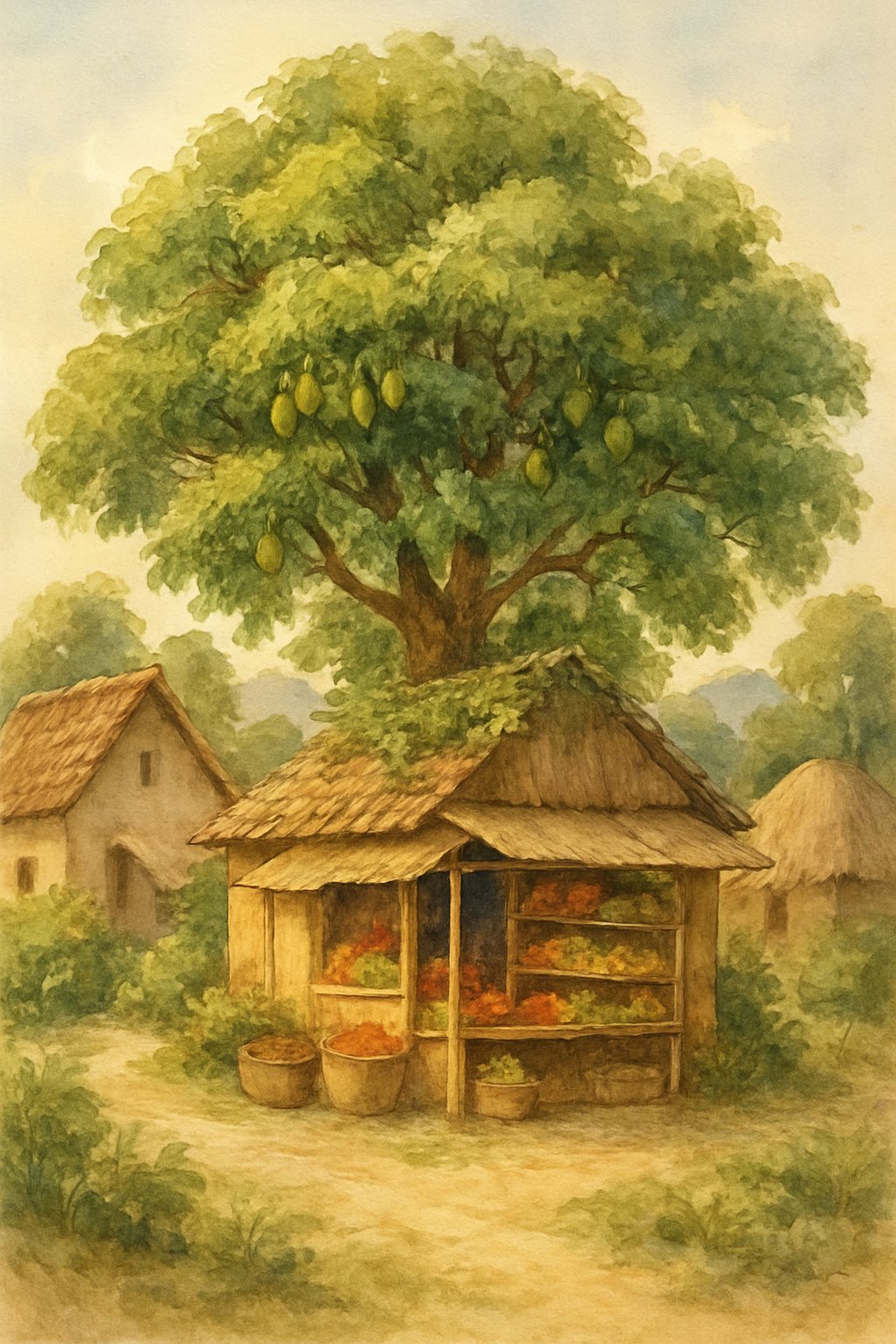
The village grocery shop under a mango tree is a common and peaceful scene in rural areas. It shows a small shop shaded by a large mango tree, offering a mix of daily needs.
Painting this scene in watercolor captures the soft light and natural colors. The mango tree adds texture with its leaves and fruit, creating a calm atmosphere.
Artists focus on simple shapes and gentle tones to bring out the quiet life of a village. This idea is great for practicing light, shadow, and detail in nature.
3) Morning glow over a serene village
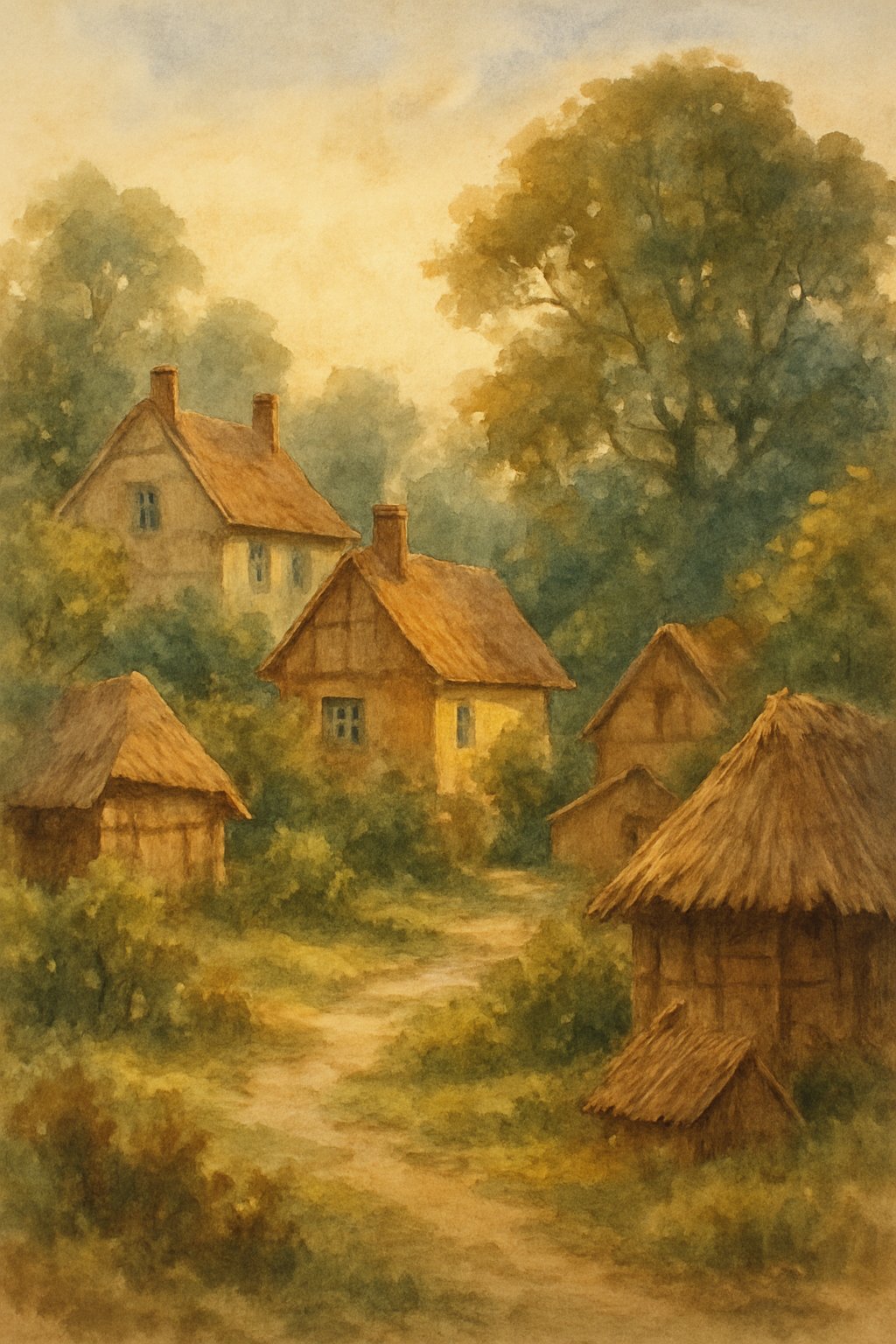
The morning glow creates soft light that gently touches the village. This light brings calmness to the scene and highlights simple details like rooftops and trees.
Artists often use warm colors to show the early sun. Light fog or mist can add a quiet, peaceful feel to the painting.
Capturing this time of day helps show the beauty of a calm village just waking up. It invites viewers to feel the serenity of the moment.
4) Mountain village scenery with watercolors
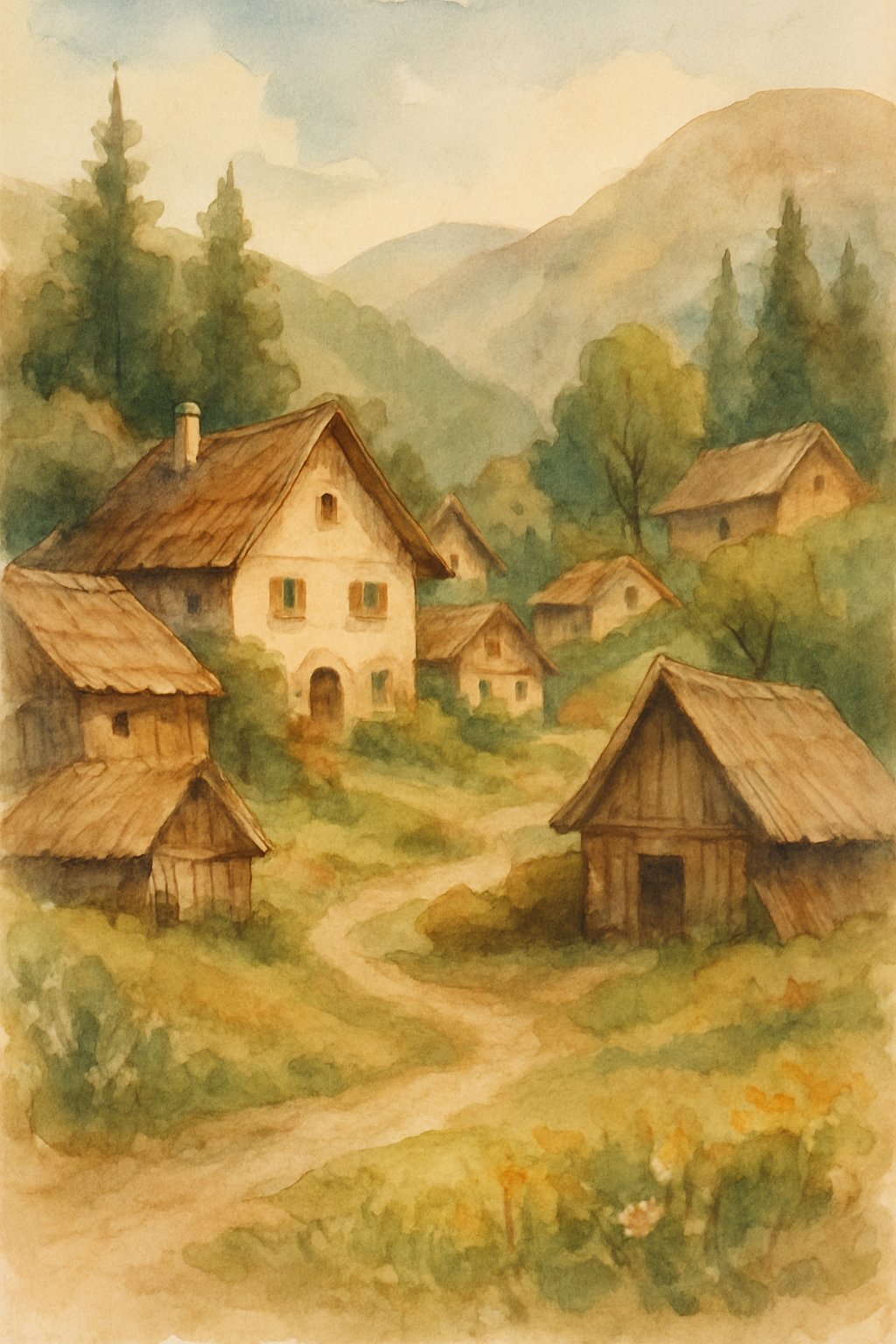
Mountain village scenes often show small houses set against tall peaks. Artists use soft colors to capture the calm sky and sharper tones for the buildings.
Watercolors work well to create the natural feel of mountains and village life. Light washes can show mist or clouds, while careful brushwork adds details to roofs and trees.
This style suits beginners and skilled painters alike, offering a balance of simplicity and detail.
5) Farmer working in a rural village scene
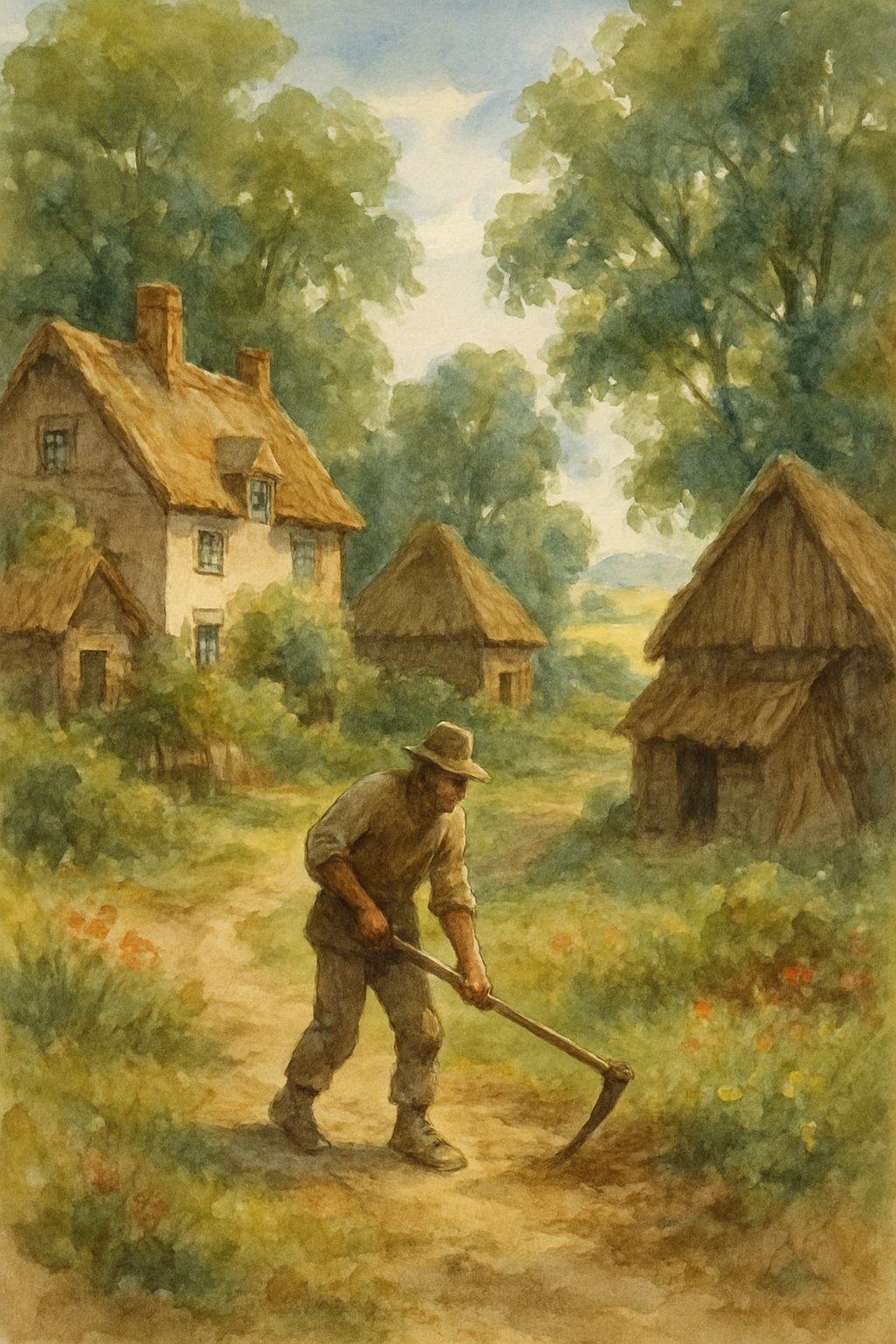
This scene often shows a farmer in the middle of fields, working with simple tools. The background usually includes crops, trees, and sometimes a small village or huts.
Watercolor is great for painting soft skies and natural light in these settings. The use of gentle colors helps capture the peaceful rural life.
Adding details like water buffalo or farming equipment can make the painting more realistic. The focus stays on the harmony between the farmer and the land.
6) Traditional Indian village life painting
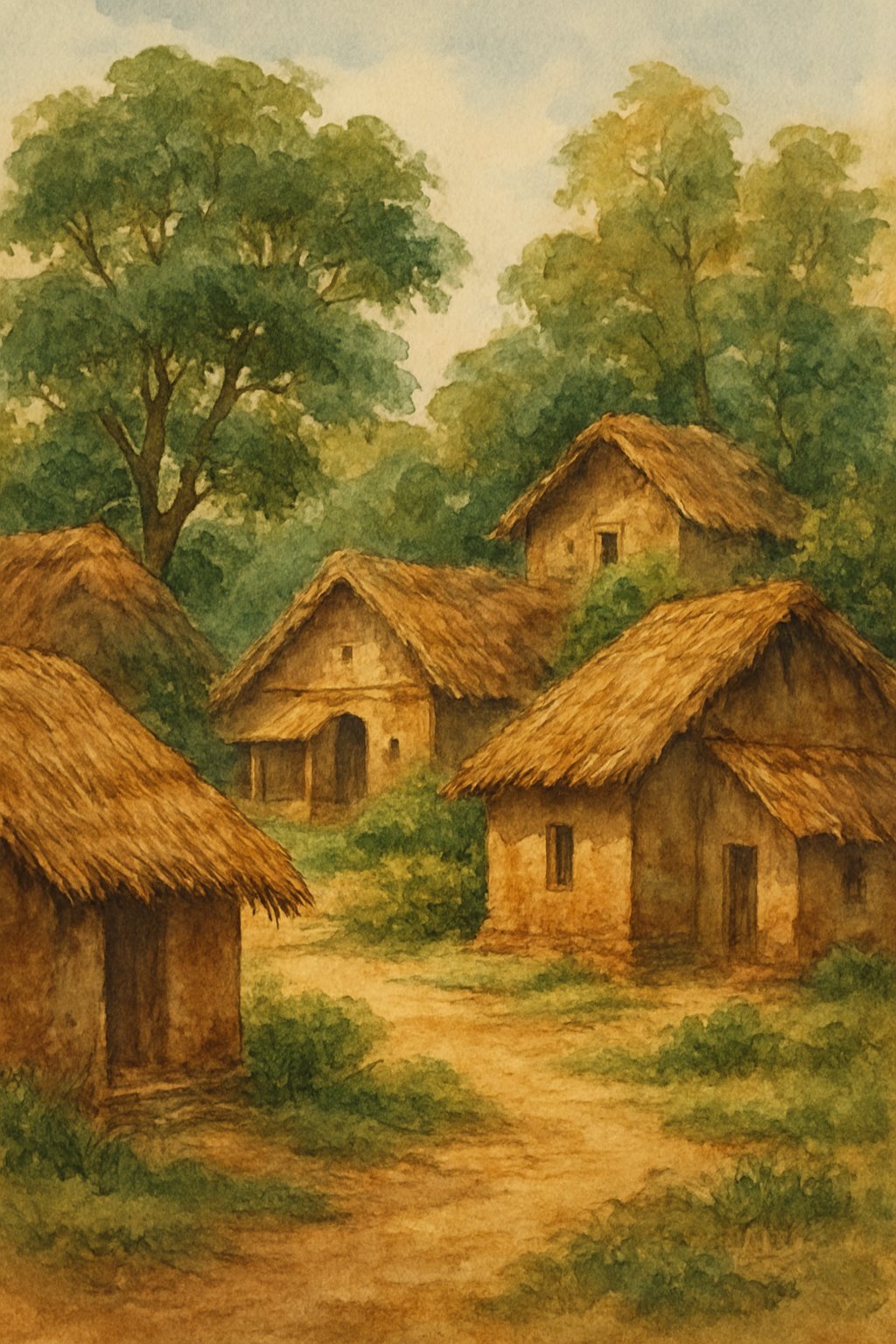
Traditional Indian village life paintings often show daily activities like farming, cooking, and festivals. Artists use watercolor to capture the simple beauty and colors of rural life.
These paintings highlight people in traditional clothes and natural settings. Watercolor allows soft details that suit the calm village scenes well.
Scenes from villages in Rajasthan or Bengal are popular subjects. They reflect cultural and community life in peaceful landscapes.
7) Watercolor village with a flowing river
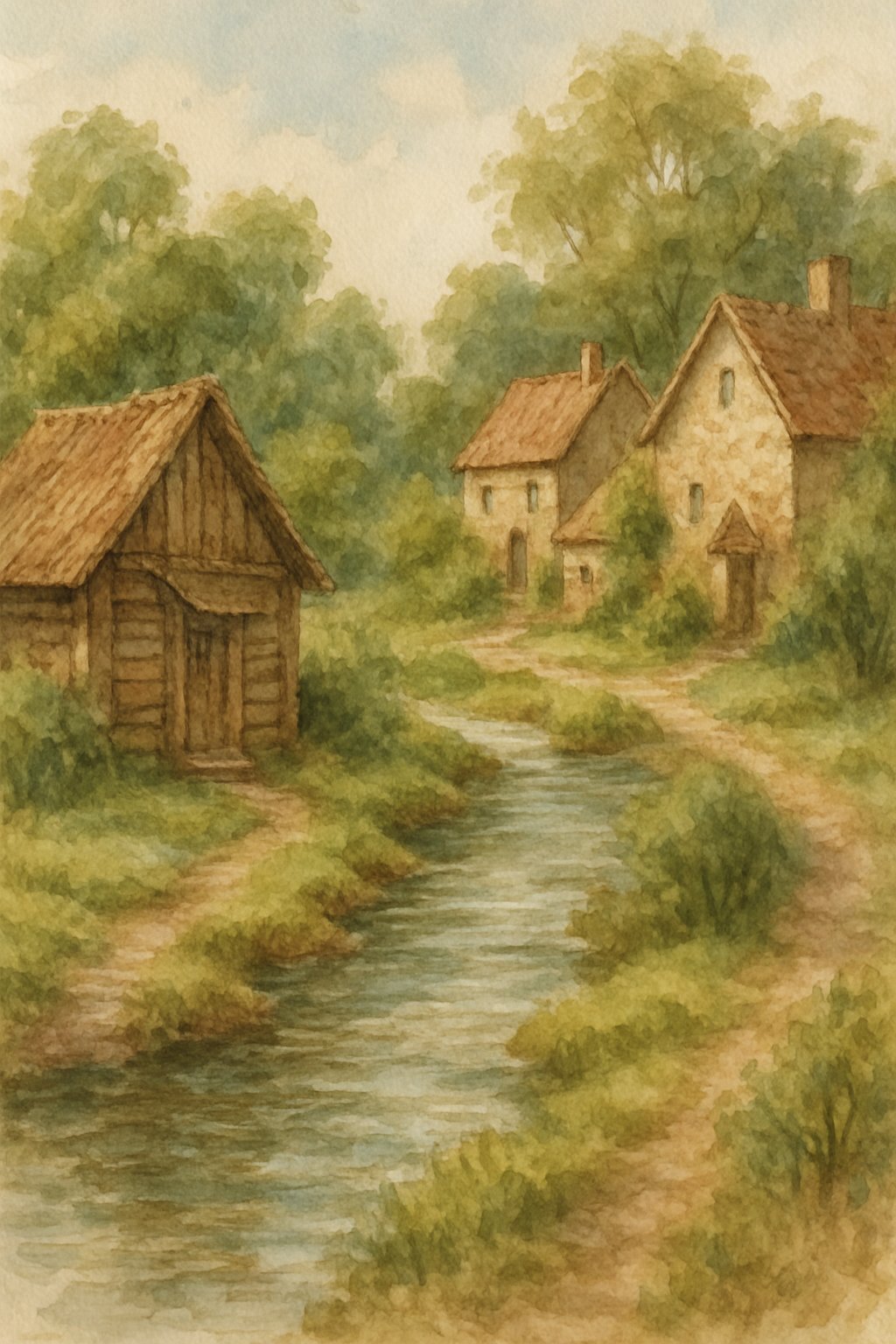
A flowing river adds movement and life to a village painting. It creates a natural division between land areas and can lead the viewer’s eye through the scene.
Artists often include simple bridges or cottages near the river to connect the elements. Using soft, blended colors helps suggest water’s smooth flow.
The river can reflect trees and houses, adding depth to the painting. This scene combines calm water and rustic village life for a balanced composition.
Fundamental Techniques for Watercolor Village Scenes
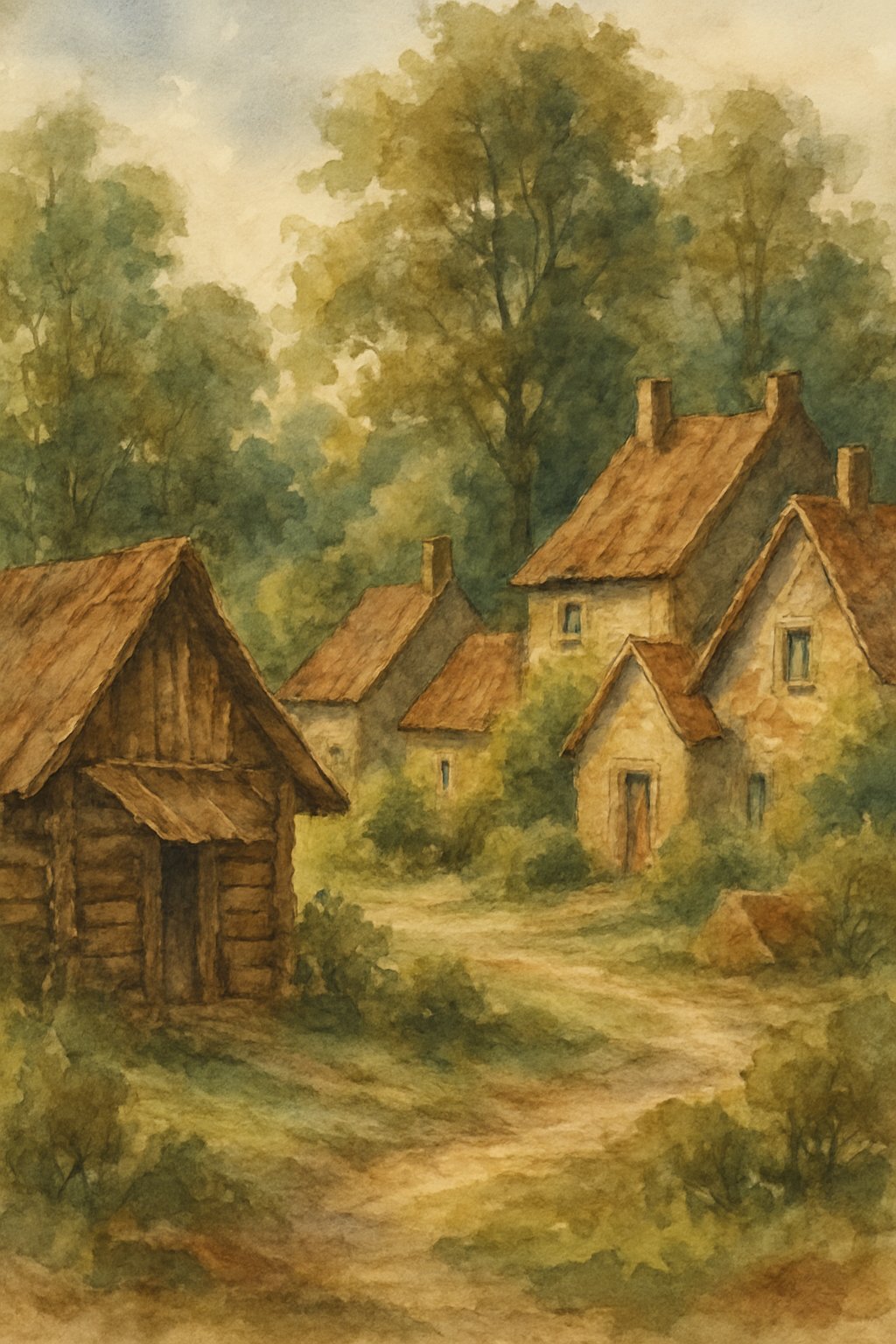
Painting village scenes with watercolor requires careful control of color layers, light effects, and fine details. These elements work together to create depth, realism, and a sense of place in the artwork.
Layering and Washes
Layering is essential in watercolor painting to build color intensity and texture. Artists start with light washes to lay the base colors of the sky, ground, and buildings. Using wet-on-wet technique, they apply paint on damp paper for soft, blended backgrounds.
Once the first wash dries, heavier layers are added with wet-on-dry strokes to define shapes and add shadows. This gradual buildup allows for control over transparency and color richness. Each layer needs to dry fully before applying the next to avoid unwanted mixing.
Multiple washes help create atmospheric depth, showing distance between far and near buildings. Careful layering also enhances natural textures like brick walls or foliage, making the village scene more believable.
Capturing Light and Atmosphere
Light plays a vital role in bringing village scenes to life. Artists observe how sunlight hits roofs, trees, and streets at different times of day. Warm colors such as yellows and oranges often represent sunlight, while cool blues and purples suggest shadowed areas.
To create a natural glow, painters leave some paper white or lightly tinted to show highlights. Soft transitions between light and dark areas mimic how light diffuses in real life. This also helps convey the time of day and weather, such as a bright morning or a foggy evening.
Atmosphere can be built by adding subtle color gradients in the sky and around distant mountains or hills. These gradients create a sense of space and mood without overwhelming the village details.
Detailing Architectural Features
Fine details in buildings give character and realism to village paintings. Painters use small brushes or even a fine pen to outline windows, doors, roofs, and fences. These details should be sharp but not overly crisp to maintain the soft look of watercolor.
Repeating simple shapes like rectangles for windows or triangles for roofs helps keep the village cohesive. Adding texture with dry brush strokes or splattering can mimic the roughness of stone or wood.
Shadows under eaves and around corners add depth to architectural features. It’s important to balance detail with simplicity to avoid clutter and keep the focus clear. This careful work highlights the charm and uniqueness of the village setting.
Color Choices and Composition Tips
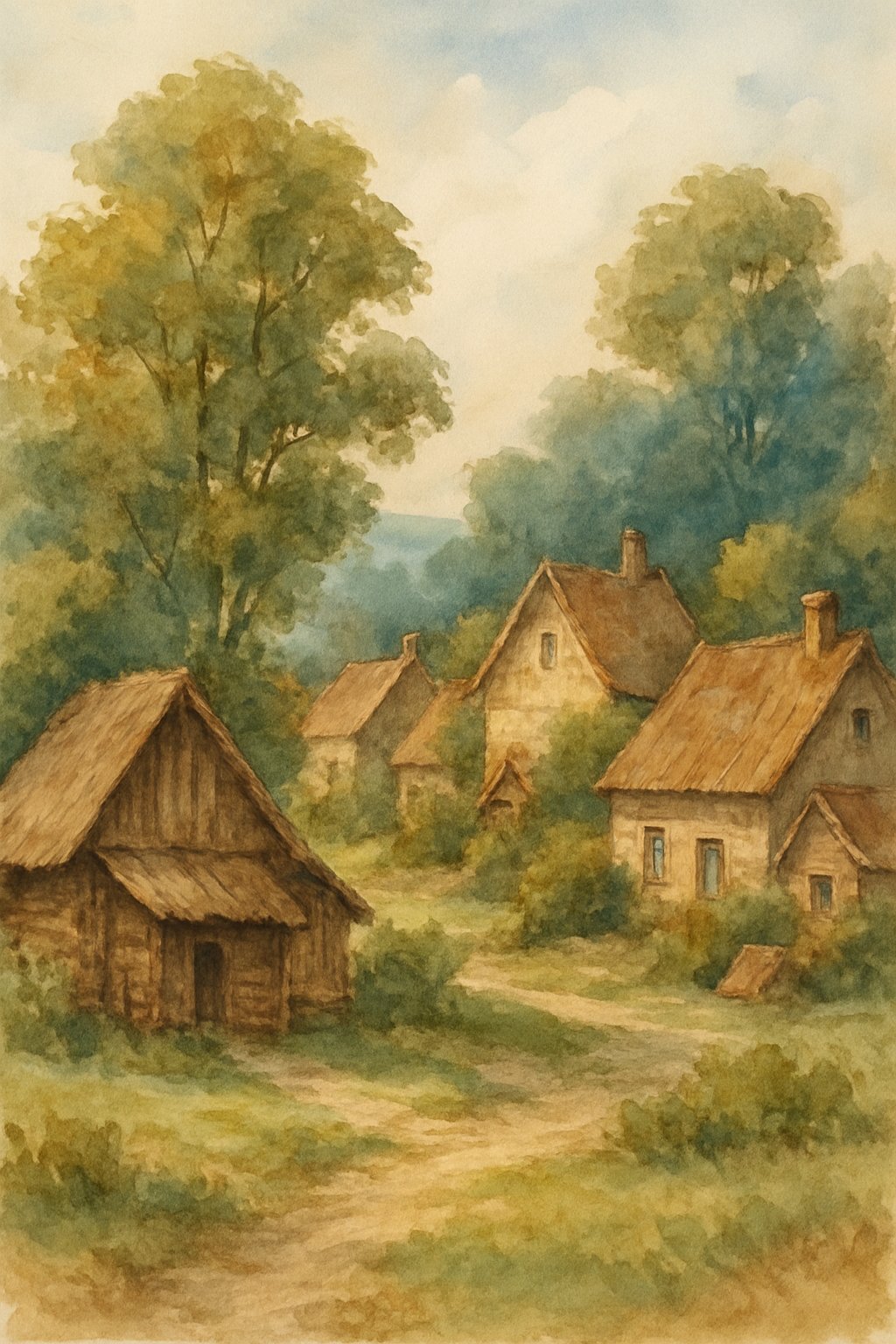
Successful village scene paintings depend on careful decisions about color and how elements are arranged. The right colors create mood and harmony, while good composition guides the viewer’s eye through the scene clearly and naturally.
Selecting a Harmonious Palette
Choosing colors that work well together is key to making a village painting feel balanced. Using a limited palette with related colors helps keep the scene unified. For example, soft browns, greens, and blues often suit rural villages.
Darker colors placed under objects suggest shadows, adding depth. Combining warm and cool tones can create contrast but should be balanced to avoid clashing. Colors can also be adjusted to reflect different times of day or weather conditions, like warm yellows for sunset or cool grays for cloudy skies.
Balancing Foreground and Background
Proper balance between foreground and background ensures that the village scene feels realistic and organized. Elements in the foreground should have more detail and brighter colors to draw attention, while the background uses lighter hues and softer edges to suggest distance.
Creating paths or tunnels within the image can lead the viewer’s eye naturally from front to back. Simplifying shapes in the background reduces distractions and helps the main parts of the village stand out. Keeping this visual hierarchy clear helps maintain a smooth flow across the painting.
